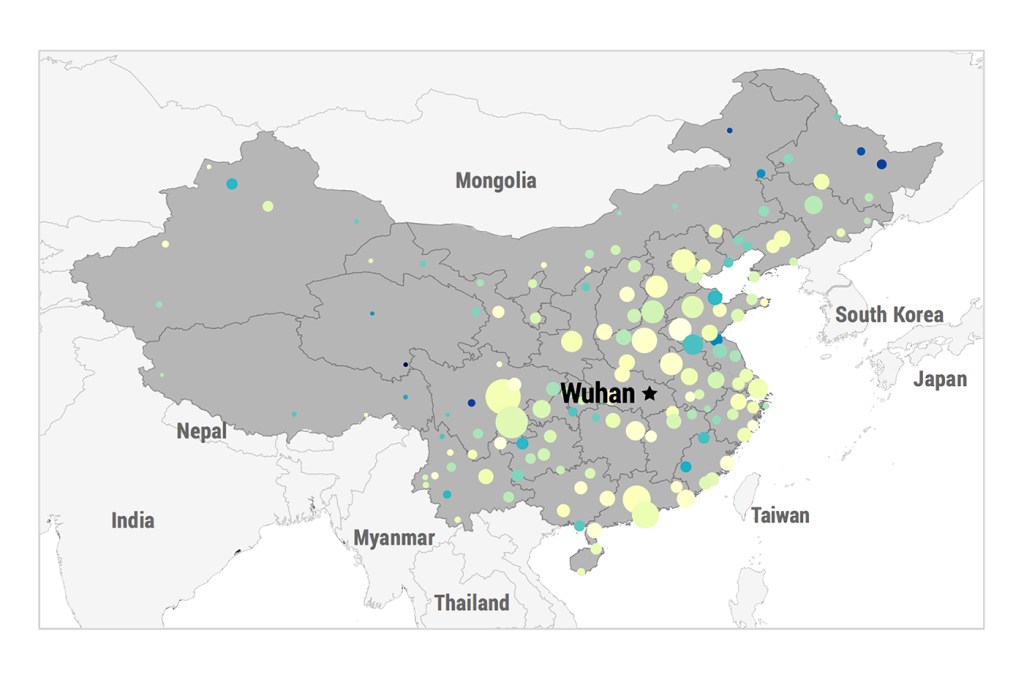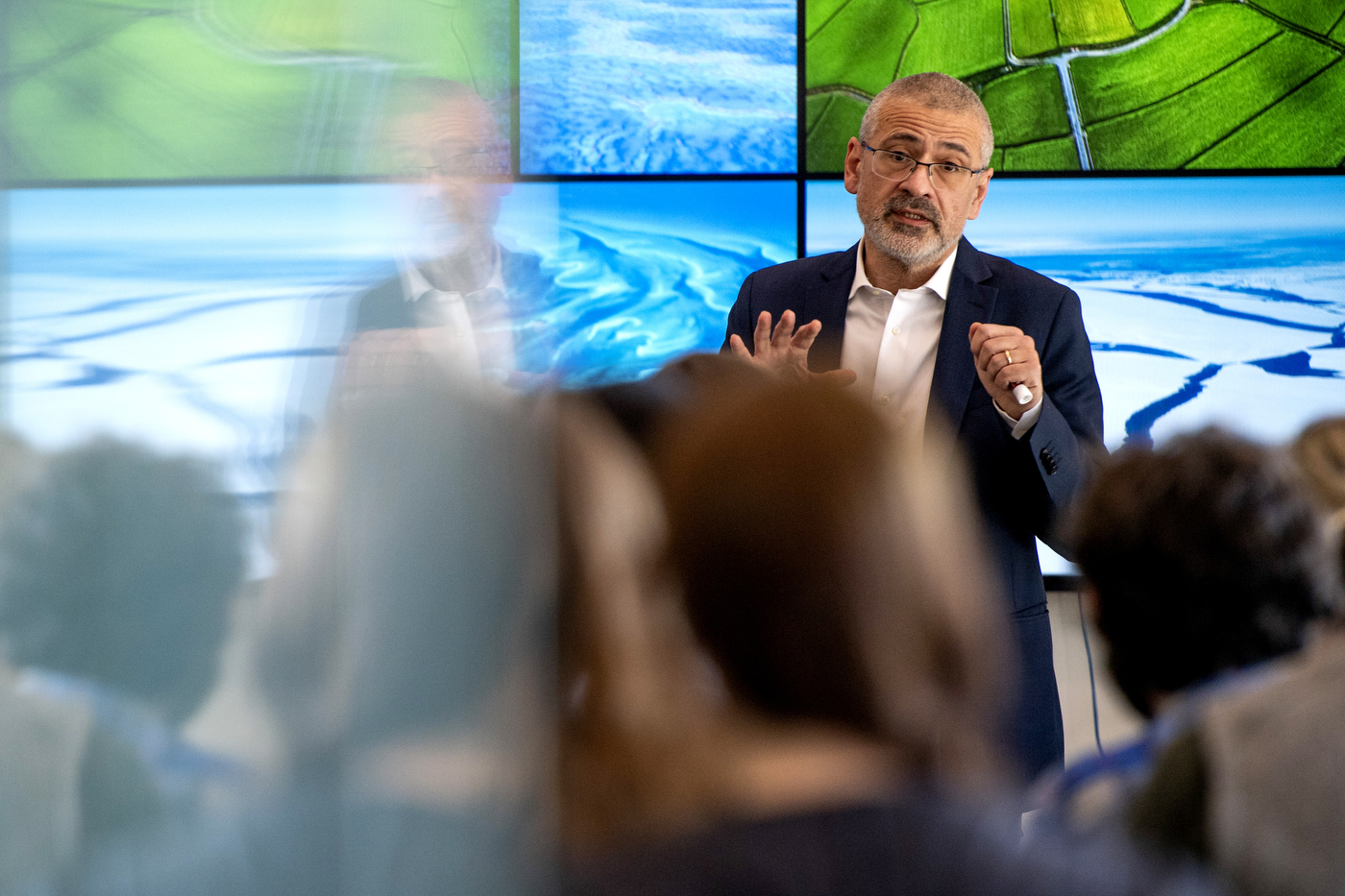Closing borders can delay, but can’t stop the spread of COVID-19, new report says

Closing borders will not stop the spread of COVID-19, at least not entirely. But canceling concerts might.
In a paper published Friday in Science, a team of Northeastern network scientists showed that the travel ban in Wuhan, China earlier this year did not prevent the spread of COVID-19 to other parts of the country.
“We found that the travel ban in Wuhan only delayed the spread of the disease by three to five days to other parts of mainland China,” said Jessica Davis, a third-year doctoral student in Northeastern’s Network Science Institute and a co-author of the paper. “But it did help stop the spread of international cases by as much as 80 percent.”
There’s one major caveat, though. Travel restrictions to and from China only slow down the international spread of COVID-19 unless combined with efforts to reduce transmission on a community and an individual level.
“That means staying home if you’re sick,” said Ana Pastore y Piontti, a co-author and research scientist in Northeastern’s Laboratory for the Modeling of Biological and Sociotechnical Systems. “Wash your hands, self-isolate, don’t go to concerts, that kind of thing.”

“Travel restrictions aren’t enough unless we couple it with social distancing,” she said. “And even then, it slows the arrival of the disease, but once it arrives, you need to mitigate it or else it will spread all the same.”
In other words, travel restriction doesn’t change the natural rate of transmission. It can only change the start date.
“At this point travel restrictions are difficult to implement,” Alessandro Vespignani, director of the Network Science Institute, said in a public announcement Thursday. “There’s already so much circulation and the number of cases is quite substantial in a growing number of countries.”

The important thing is that people take precautions while traveling and especially upon return.
The Centers for Disease Control and Prevention suggests that people cancel travel plans to China, Iran, Italy, and South Korea, countries with widespread ongoing transmission, unless absolutely necessary.

For people who must travel to these countries, the CDC asks that people stay home for 14 days after returning, during which time they should monitor their temperatures and avoid social contact.
“You should self-quarantine and self-monitor for others,” said Vespignani, who is Sternberg Family Distinguished University Professor of physics, computer science, and health sciences. “These practices won’t lower your chances of contracting COVID-19 if you’ve already been exposed, but they can help prevent transmission to other people.
Another reason travel restrictions don’t work is because people can have COVID-19 without showing any symptoms.
“There’s a five-day or longer incubation period,” said Pastore y Piontti. “You might get infected today, but you don’t show symptoms for seven days, so you pass any screenings at the airport, and in the meantime you travel to three countries.”
“Cases are already spreading,” said Matteo Chinazzi, co-author and research scientist in the MOBS Lab. “Closing airports will buy you time, but it’s not enough.”
For media inquiries, please contact Jessica Hair at j.hair@northeastern.edu or 617-373-5718.





